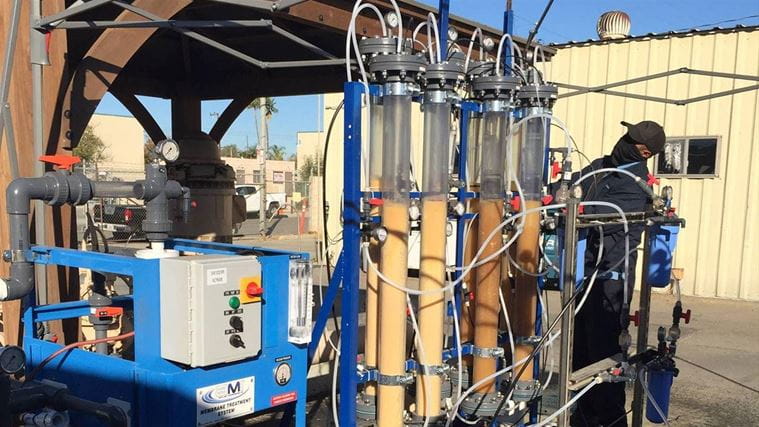California Water District Plans Upgrade to Treat PFAS
The East Orange County Water District (EOCWD) intends to bring down its PFAS concentrations to non-detect levels, an impressive feat considering PFAS detection is monitored in the parts per trillion (ppt). EOCWD is a member of the Orange County Water District, an internationally-recognized leader in drinking water purification and responsible for protecting the region’s water supply. Together with CDM Smith, Orange County water officials have launched an innovative pilot project in order to select the most efficient treatment option.
Orange County water officials embarked on the project earlier this year, when the State of California advanced its PFAS response plan, which included widespread sampling and testing. The California Water Resources Control Board led the investigation to determine the extent to which the state’s water supply may have been affected by PFAS and to aid in treatment selection. Since February 2020, the board has required water systems with PFOA concentrations above 10 ppt for PFOA and 40 ppt for PFOS to either provide treatment, notify customers or shut down the affected wells. EOCWD chose to shut down its wells and import water from third parties in order to meet demand, while general manager Lisa Ohlund and her colleagues sought out a permanent solution.
Granular activated carbon (GAC) has been the primary choice for utilities looking to quickly bring contaminated wells back online with a proven and tested technology. However, researchers have been making giant strides in recent months to understand the unique characteristics of the thousands of chemical substances that make up the PFAS family. For example, GAC has successfully brought PFAS concentrations down, but its effectiveness tends to decrease for long-chain PFAS. Additionally, the first pilots and fully operational PFAS systems have been built, and some water purveyors have water quality challenges that could disrupt the efficacy of certain technologies.

EOCWD has retained CDM Smith to provide assistance during the technology selection process. The goal is to rely on rapid small-scale column testing (RSSCT) to find the most effective sorbents for PFAS removal under the diverse conditions specific to Orange County’s wellfield groundwaters. The team is reviewing potentially effective media options, like bituminous-, lignite- and coconut-based carbons. As part of this process, CDM Smith’s team of engineers have suggested adding RSSCT for ground anion exchange (AIX) resins, as well.
EOCWD is taking this unique opportunity to test and pilot different entrained-air removal technologies to bring its wells back online as soon as possible, but most importantly, to provide the best PFAS treatment solution for its customers.
The OCWD PFAS pilot facility continues to run and has now provided more than 10 months of data. OCWD reports it will continue testing some Phase 1 media into the first quarter of 2021 and a follow-on Phase 2 program is under development to start during the second quarter.

We help our clients solve complex problems. Improving the quality of life for millions of people around the world is our number one goal.
The project team rapidly delivered the following:
- Water quality evaluation and treatability assessment
- Technology evaluation to determine life cycle cost and efficiency for PFAS removal
- Evaluation and recommendation for potential piloting technologies for entrained air removal
- Development of entrained air piloting plan and protocol
- Hydraulic review, including booster pumping needs and surge mitigation







